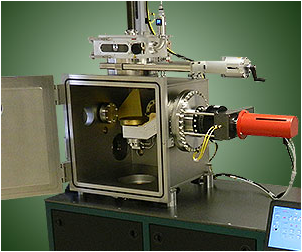
Written by: Denton Vacuum, LLC
There are numerous ways to go about creating microwave circuits. Two of the more common processes involve the removal of excess material to reveal a specific pattern. Furthermore, in both cases, the circuit design is protected by a photo-resistant material with the substrate being exposed to an etching process. The unprotected material is then etched through various methods.
Isotropic Solutions
The first method involves a chemical process in which the substrate is submerged into an etching solution – known as isotropic. The sides of the lines, and the top surface, are exposed to the solution, which results in the lines being undercut by the etching solution. Now, because there haven’t been developments that allow one to control the rate of the undercut, circuit to circuit repeatability tends to suffer.
Dry Ion Etching
Another approach involves a dry ion etching method. In basic terms, ion beam milling can be viewed similarly to an atomic sand blaster. Submicron ion particles are accelerated and shot into the surface of the target while mounted on a table inside a vacuum chamber. Much of the target work is either a substrate, wafer, or element that requires there to be material removal through either dry ion etching or atomic blasting. This ion beam etching method is an intense process that is routinely used today.
The Importance of Photoresist
Like with any etching process, there is a selective protectant that is applied prior to its introduction into the ion miller – even with sputtering systems as well. This photoresist material protects the underlying material during the process of etching – which could take longer than 3 to 4 hours, depending on the etch rate and the type of material being used. One of the keys to determining the length of the process lies in the photoresist’s etch rate. Generally speaking, the target metal tends to etch at a rate that is substantially faster than the photoresist itself. Furthermore, the metallization tends to define the circuit’s remains. Now, remember, different forms of photoresist can be applied. But, the user must determine the type of metal that is being used first, as well as the amount of material being removed.
The attendant’s repeatability, as well as the precision, is the key to ion beam milling process. Ion beam assisted deposition requires there to be numerous factors in place to assure that the end result comes as close as possible to a universal etching solution.



